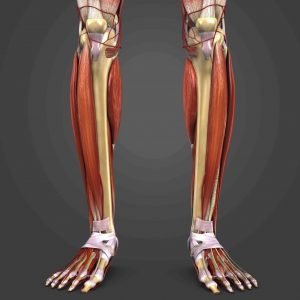SHIN SPLINTS (MEDIAL TIBIAL STRESS SYNDROME)
What are shin splints
 The term “shin splints” refers to pain and tenderness along or just behind the inner edge of the tibia, the large bone in the lower leg. Shin splints–or medial tibial stress syndrome as it is called by orthopedists.
The term “shin splints” refers to pain and tenderness along or just behind the inner edge of the tibia, the large bone in the lower leg. Shin splints–or medial tibial stress syndrome as it is called by orthopedists.
What causes shin splints?
Shin Splints usually develops after repetitive physical activity, such as vigorous exercise or sports. Repetitive activity leads to inflammation of the muscles, tendons, and periosteum (thin layer of tissue covering a bone) of the tibia, causing pain. The bone tissue itself is also irritated.
How to prevent Shin Splints
One dose of prevention is worth three doses of the cure. Shin splints can be avoided, or at least be less likely to occur, if you have a proper pair of shoes with proper arch support. Good form while running and running on softer surfaces as well as balance and strengthening your legs will help. The best thing you can do though is to pace yourself; overuse injuries can be avoided by not overusing.
Risk factors of Shin Splints
Shin Splints are more likely to occur in:
- Athletes beginning a training program
- New runners, or runners trying to push farther then they have before
- Trail running on rough terrain, or running on cement
- If you have flat feet that have not been properly addressed
- You are starting a massive undertaking of lifestyle change, such as training for a marathon for the first time or joining the military without being in decent shape.
Treating Shin Splints
If you have shin splints that are just not getting better then it would be a good idea to rule out a stress fracture as they can be formed with the same repetitive stresses that cause shin splints. Shin splints can be treated at home with the R.I.C.E. method of first aid as well as over the counter, label directed use, of NSAIDs such as Ibuprofen for pain relief. After the pain is gone you can resume your activities, but keep in mind preventive techniques.
Rest for shin splints
Resting from the activity that caused your overuse injury can allow for your tissues to become less inflamed and help with the healing and pain.
Ice for shin splints
Ice on and off after the initial injury to help reduce inflammation and pain.
Compression for shin splints
Wrapping a swollen shin can help minimize swelling, reducing pain and irritation. A compression sleeve from a local store will do.
Elevating shin splints
Elevating your legs above your heart while you lay down and rest will keep fluid from accumulating in irritated tissues, reducing the effects of inflammation.
Shin Splints not getting better? AOA Orthopedic Specialists has an Orthopedic Sports medicine team near you. 817-375-5200
F.A.Q.
What are the symptoms of a shin splint?
Pain and discomfort along the inner edge of the shin bone are common symptoms, which usually occur during or after exercise. The pain could be subtle or intense, and it could get worse with movement. Swelling or moderate redness is also possible.
How is a shin splint diagnosed?
A physical examination and an evaluation of symptoms are usually used to make a diagnosis. Imaging tests such as X-rays or MRI scans are rarely required, although they may be requested to rule out other illnesses if symptoms are severe or prolonged.
How long does it take for a shin splint to heal?
The length of recovery depends on the severity of the ailment and the individual’s dedication to treatment. Most cases of a shin splint cure within a few weeks to a few months if treated properly. However, in chronic or severe situations, recovery may take longer.

